Low-pressure mixer tap – still common in really old buildings
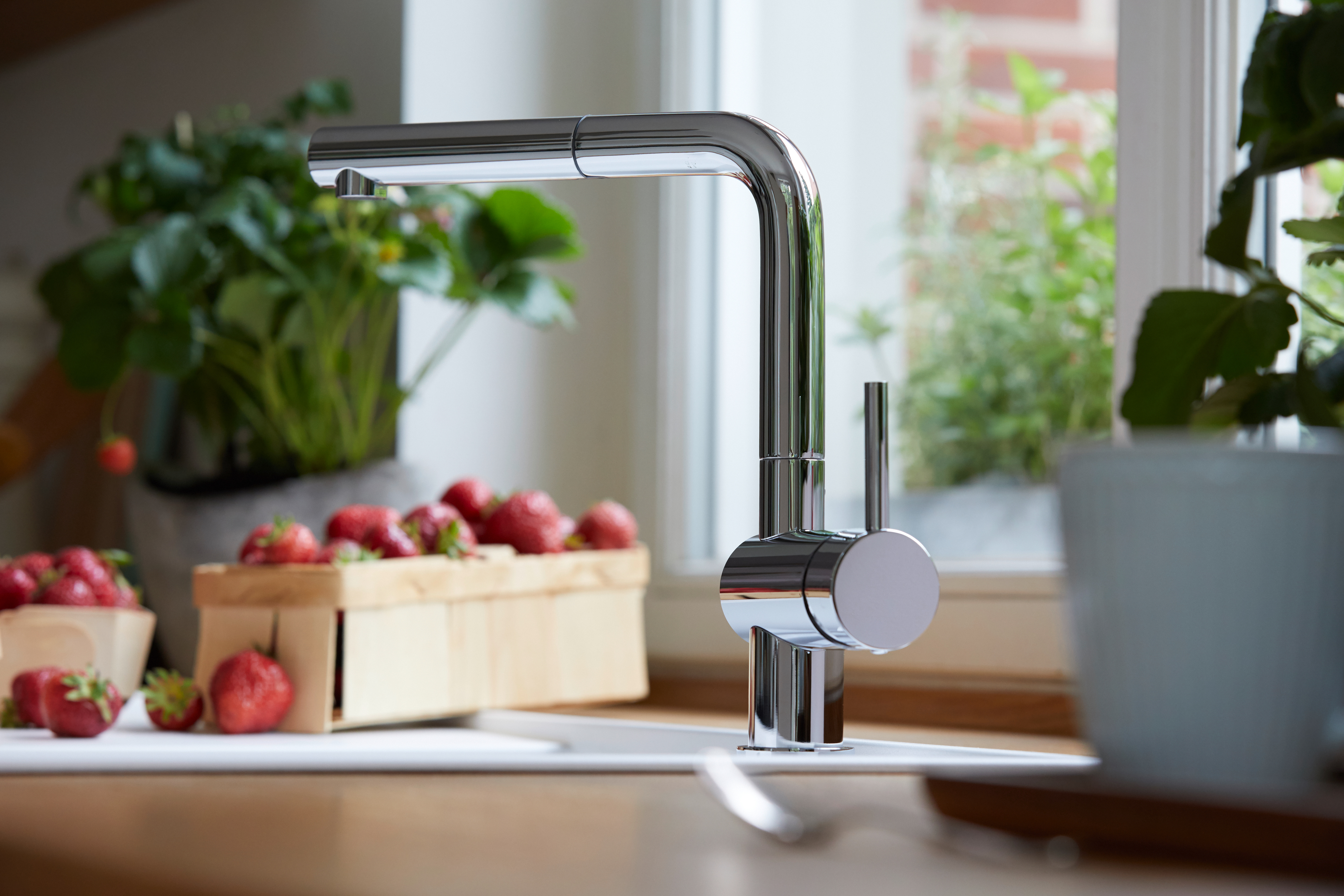
Drip. Drip. Drip. It’s dripping quietly. Just a little. This can happen if you have a low-pressure mixer tap in your kitchen. What does it look like beneath your sink? If there a hot water heater or a boiler in your base cabinet? Yes? Then you need a kitchen mixer tap that has been specially made to compensate for the pressure between the water pipe and your hot water processing system via a low-pressure boiler. : A low-pressure mixer tap. It is easy to spot the difference with a high-pressure mixer tap: Three hoses hang from a low-pressure mixer tap, or you will be able to see three openings, while a high-pressure mixer tap only has two.
Three is better than two – ensuring that you boiler stays in good shape
Why? In the past, there was only one water pipe. For cold water. If you wanted warm water, you needed a boiler, a hot water storage tank. You’re bound to have seen pictures of old bathrooms and kitchens with a huge tub enthroned above the bathtub or sink bowl. Fortunately, those days are over. Hot water heaters and boilers are much smaller nowadays. And less obtrusive. In the kitchen, they are generally found underneath the sink.
The problem is that low-pressure water heaters function without pressure. The pressure from the water pipe is three to six bars too high, and could cause an ear-shattering explosion in the appliance. What can be done?
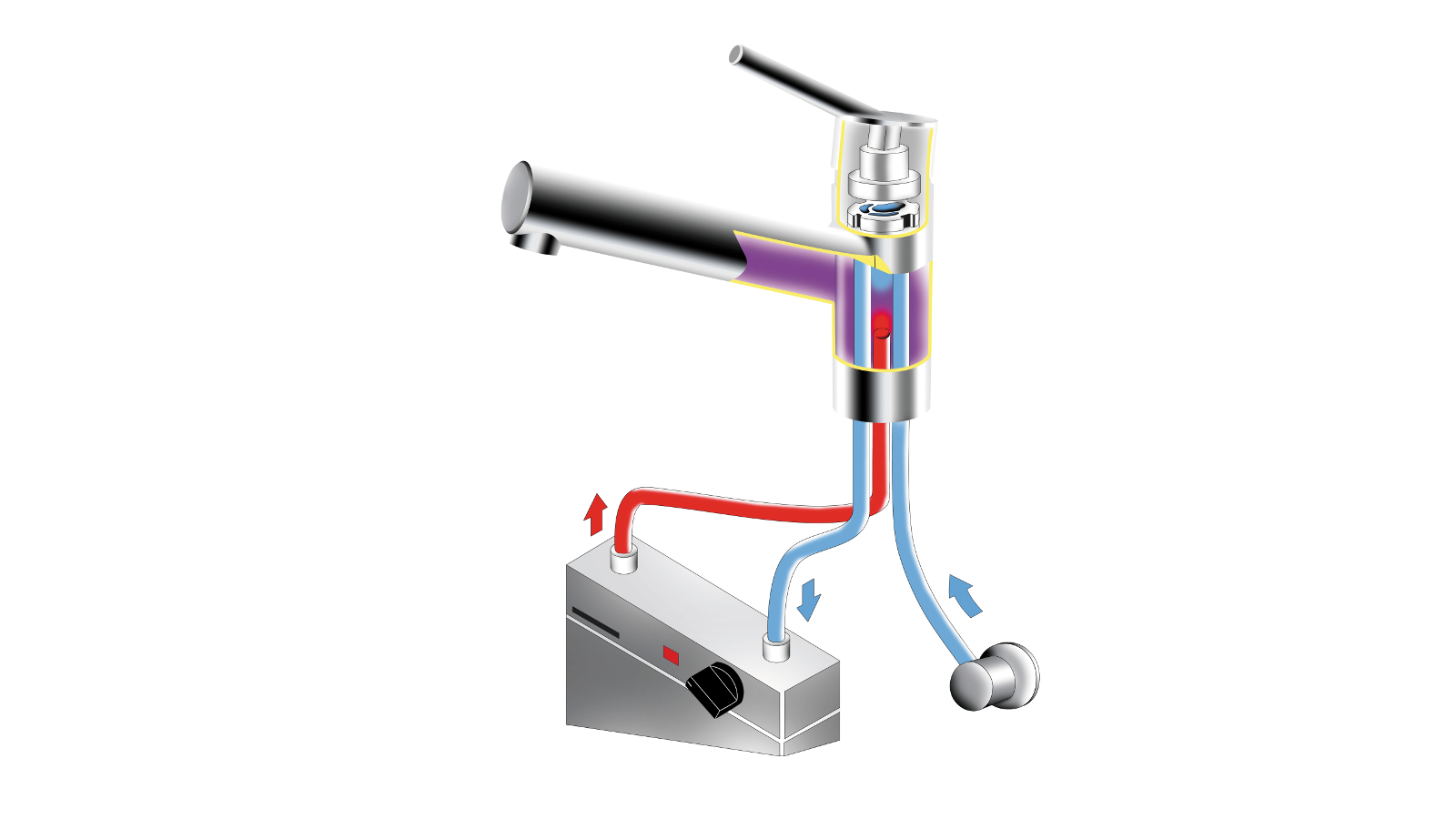
Low-pressure mixer taps regulate it
Low-pressure mixer taps absorb this pressure, reducing it to a lower pressure. This is why they are called low-pressure mixer taps! The cold water from the pipe flows first into the mixer tap, and then into the boiler in the cabinet. The water is warmed up here. If you now lift the warm water lever, cold water will flow from the mixer tap into the boiler. This forces the warm water upwards and into the mixer tap. Voilà! Water gushes out of the tap in the desired mixing ratio. Just as you like it – coolish, lukewarm or hot.
Drip. Drip. Drip. As the water in the boiler heats up, it expands. It needs space and looks for ways of getting rid of the increased pressure. It drips out of the mixer tap. Drip. All perfectly normal. As long as it only drips for a little while, and the amount of water remains minimal.
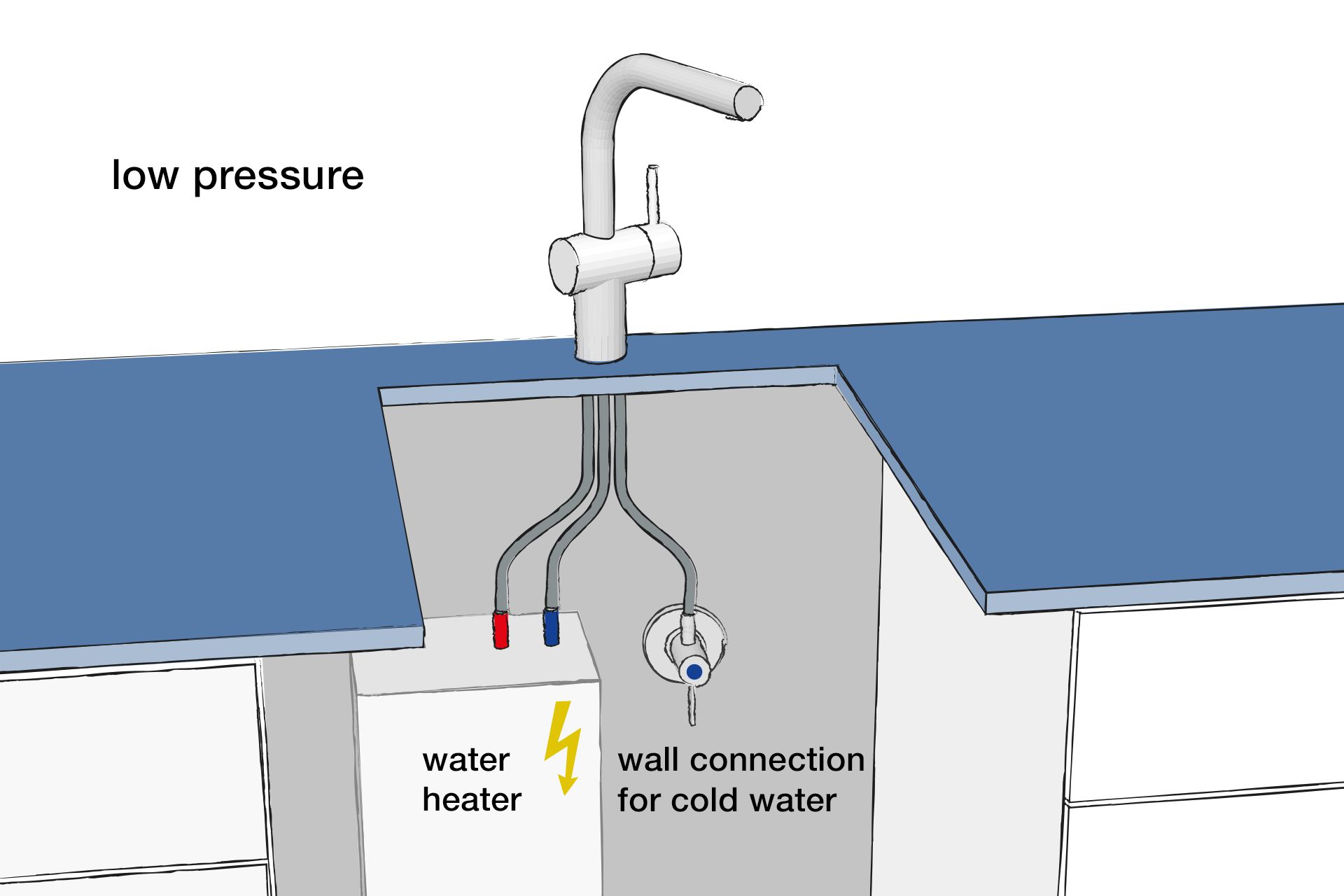
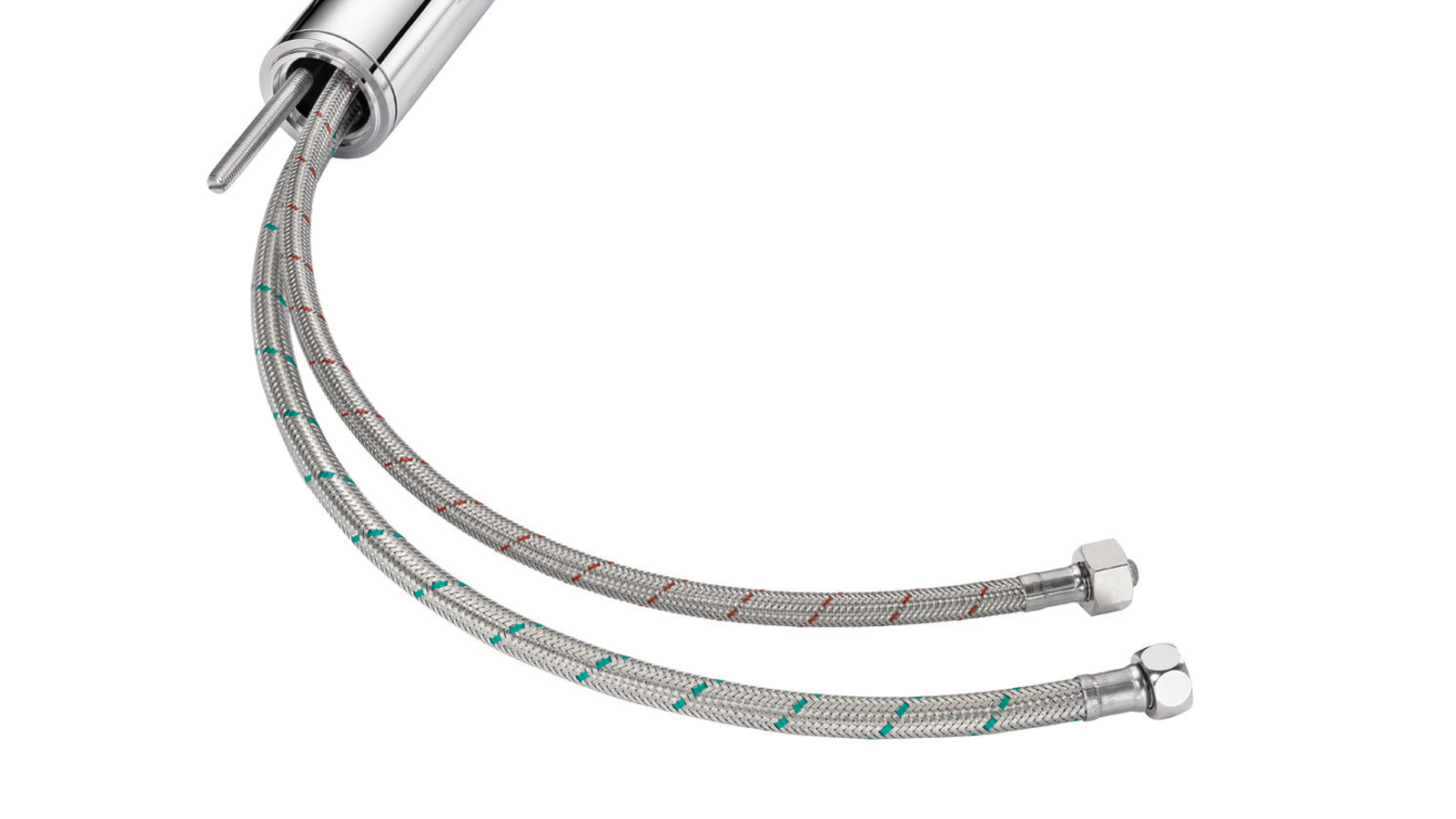
Water gushing from the pipe at high pressure
You should only connect a high-pressure mixer tap if there are two water pipes coming out of the wall. You connect the mixer tap by joining the two hoses for cold and hot water directly up with the water pipes using a wall angle valve. Your heating or central hot water system will warm the water. It then comes out of the pipe at full steam and high pressure.
Have you done some rebuilding work? Or perhaps you're moving into a new apartment? Then look for your favourite from our range of high-pressure mixer taps. Most new builds have two water pipes. High-pressure mixer taps are the most common type of mixer tap nowadays.
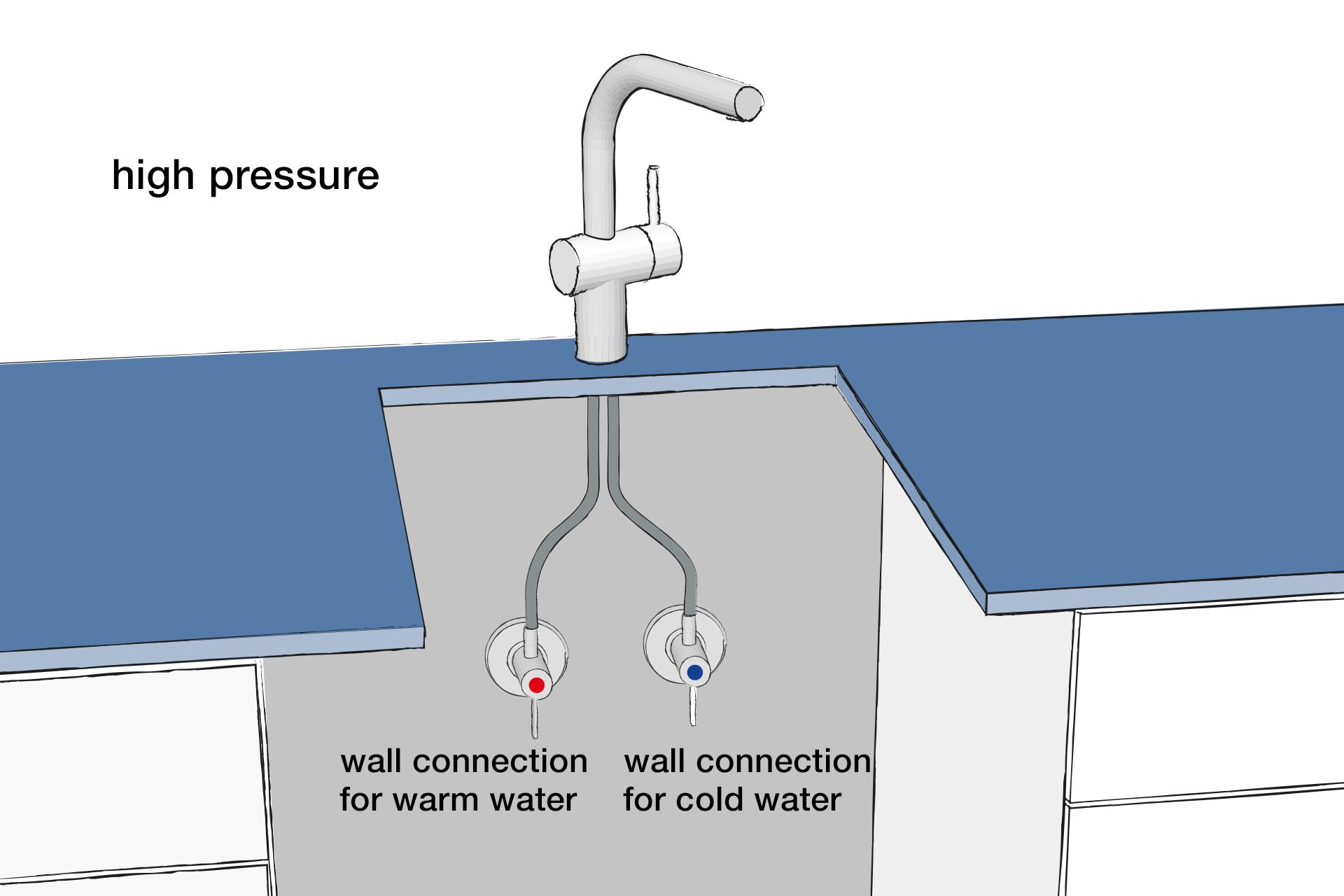
Why are there different kinds of mixer taps?
Water is warmed up via the heating system
- Two water pipes
- Newly built home
- Pressure forces the water straight from the pipe into the mixer tap
- High-pressure mixer tap with two hoses / openings
Water is heated separately using a hot water storage tank or boiler
- a water pipe
- often still exist in old buildings
- Without high pressure, water reaches the mixer tap via the boiler
- Low-pressure mixer tap with three hoses / openings
The water in your apartment or house may be heated in different ways. Whether you need a low-pressure or high-pressure mixer tap depends on the water connection.